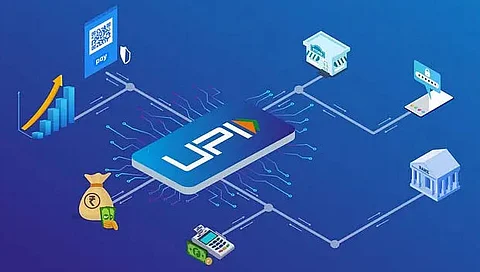
- Home
- Live Blog
- Breaking News
- Top Headlines
- Cities
- NE News
- Sentinel Media
- Sports
- Education
- Jobs

Nilim Kashyap Barthakur
(nilimkashyap123@gmail.com)
The Unified Payments Interface (UPI) has emerged as a game-changer in
India’s digital payment landscape, revolutionising the way people transact and paving the way for a cashless economy. As a government-backed payment system, UPI has played a pivotal role in driving financial inclusion, promoting digital literacy, and transforming India into a digitally empowered nation. As of June 2024, the Unified Payments Interface (UPI) has around 350 million active users in India.
In April 2009, the National Payment Corporation of India (NPCI) was established with the goal of simplifying and unifying payment systems across the country. At the time, the Reserve Bank of India (RBI) discovered that on average, an individual in India only made six non-cash transactions a year, while 10 million retailers were equipped to accept card payments. Shockingly, around 145 million households didn’t have access to banking services. Cash transactions were rampant, fuelling issues like black money and corruption. In response to this, the RBI laid out a vision in 2014 to create a secure, efficient, and inclusive payment system that would serve everyone, including the unbanked. The initiative was also part of a broader effort to reduce paper use in domestic transactions. By 2016, UPI (Unified Payments Interface) was introduced to the public. This system, under NPCI’s leadership, was designed to be simple, secure, and accessible. Its core functionality rested on four essential pillars: it allowed users to seamlessly send and receive money through their payment service providers, while banks managed the back-end processing.
UPI has significantly impacted the Indian economy by enhancing financial inclusion, promoting a cashless economy, and fostering economic growth. UPI processed over 12 billion transactions per month, a significant jump from just 1 million transactions in its first year. The total number of transactions in 2024 crossed 100 billion annually, demonstrating its rapid adoption across all sectors. The total value of UPI transactions reached Rs 200 trillion (around $2.4 trillion) by the end of 2023. This widespread use has fuelled consumer spending and merchant activities, boosting the overall economy.
At the grassroots level, UPI has truly transformed the way people in India handle money, especially in rural and semi-urban areas where banking services were once limited. Before UPI, many individuals relied heavily on cash, with limited access to formal banking channels or digital payment systems. Now, with UPI, even those who don’t have traditional banking infrastructure nearby can perform seamless digital transactions through their mobile phones.
The simplicity of UPI has made it accessible to everyone—from farmers to small shopkeepers and street vendors. All it takes is a smartphone and an internet connection to send or receive money. This has been particularly empowering for people who were excluded from the formal banking system, as they can now make payments and transfer money with just a few taps. Even feature phones now support UPI Lite, ensuring that those without smartphones can also benefit.
For small businesses, UPI has removed the need for card machines or cash-heavy transactions. By simply scanning a QR code, customers can instantly pay merchants, cutting down the time and complexity of handling cash. This digital shift has provided a huge boost to financial inclusion, allowing even the smallest of enterprises to thrive in the growing digital economy. UPI has facilitated smoother transactions for everyday needs—whether it’s paying for vegetables at the local market, buying seeds for farming, or transferring money to family members. Women, who often face barriers to accessing traditional financial services, are also benefiting from UPI’s accessibility. By empowering people to manage their money digitally, UPI is not only transforming how payments are made but also fostering a sense of financial autonomy and inclusion at the grassroots level.
Moreover, UPI has significantly reduced the dependence on cash, thereby minimising risks associated with cash handling, like theft and loss. This has been critical in rural areas where access to banks and ATMs is limited. Now, even government subsidies and payments for various schemes are directly transferred to beneficiaries’ accounts via UPI, making the system more transparent and efficient.
According to RBI data, cash withdrawals from ATMs have seen a decline in growth as more people and businesses adopt UPI for their daily transactions. Digital payment tools, especially UPI, have slowed the demand for physical currency, reducing cash-handling costs for banks and the government.
While the Unified Payments Interface (UPI) has been hailed as a game-changer in India’s digital payment landscape, it is not without its challenges and downsides. Despite its many advantages, several issues related to security, transaction failures, fraud, and infrastructure limitations have emerged. As UPI’s popularity has grown, so too have the attempts by fraudsters to exploit vulnerabilities in the system. Fraudsters often use techniques such as phishing, vishing (voice phishing), and fake UPI handles to deceive users into revealing sensitive information like OTPs (One-Time Passwords) or UPI PINs. To stay aware and safe while using UPI, we should always keep our UPI PIN confidential and never share it with anyone, even if they claim to be from a bank. Be cautious of phishing attempts and avoid clicking on suspicious links in messages or emails. We should only use verified UPI apps downloaded from trusted sources and make sure they are regularly updated for security.